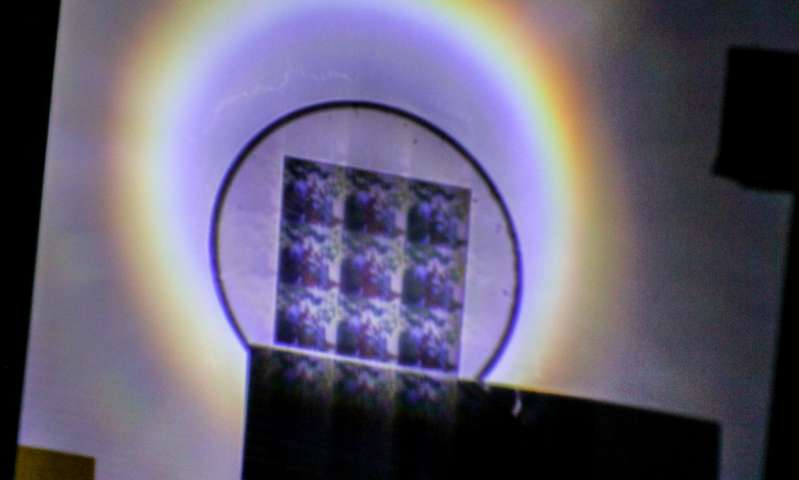New hologram paper means we’re one step closer to real life HoloChess
You still have to like chess

A team based at the University of Utah has developed a new process for creating holograms that makes them much cheaper to manufacture, while improving the color, brightness, and viewing angle.
It has managed this by creating a film that, when a light is shone through it, creates a hologram that can apparently create an image akin to a full-color photograph. The paper was published on the Scientific Reports section of Nature.
At the moment the team has only created 2D holograms, but it says that it wouldn’t be difficult to create full-color 3D moving images using the same system. And we all know what that means: HoloChess.
The announcement comes a couple of days after Disney announced that it was creating a HoloChess experience in partnership with Lenovo, but this uses an AR headset, not actual holograms.
The reason that creating holograms like the famous “Help me Obi-Wan Kenobi, you’re my only hope” scene is so difficult is because it’s technically impossible. Creative technologist at FrameStore Karl Woolley had this to say about it: “Technically the concept of a hologram is physically impossible, because you would need to stop a light beam at a point in space”
Ghost trains of the future
The way that digitally projected holograms currently work involves two different beams being projected onto a screen that, when looked through, gives the illusion of a three dimensional image on the other side.
This technique is still fairly limited, with the images that are created suffering from a distortion of color when viewed from an angle, and the image size being restricted. What’s more, the mechanism for creating color in holograms typically requires individual devices for each hue.
Sign up for breaking news, reviews, opinion, top tech deals, and more.
The team envisions this breakthrough having a wide ranging impact, from billboards to amusement rides, and yes, our HoloChess set. Talking to Phys, the team leader Rajesh Menon said: “Imagine going through a ride and you want a monster to jump out. This is a way to do that with much richer color, with higher efficiency and in a much more ubiquitous manner because it's so cheap”
What’s more, Menon thinks that we’re only two years away from 3D video being possible. Two years isn’t quite quick enough to beat Disney to the punch, but it’s a more positive estimate than we usually see from scientifically published papers. As we know more about this technology, we’ll let you know.
- Want to know more about the Disney HoloChess headset? Check out: Star Wars AR headset will make HoloChess a reality
Via Phys
Image credit: Dan Hixson/University of Utah College of Engineering

Andrew London is a writer at Velocity Partners. Prior to Velocity Partners, he was a staff writer at Future plc.